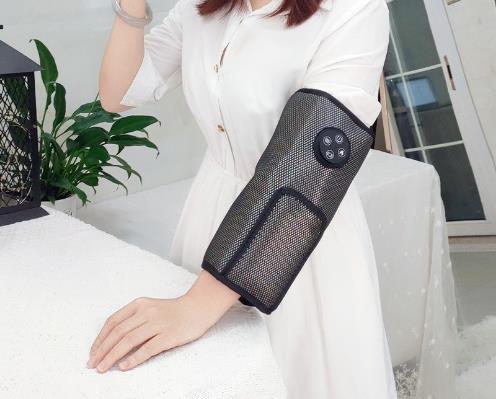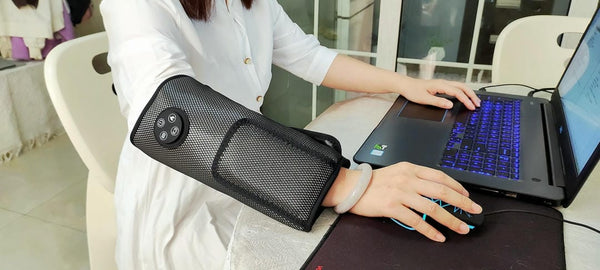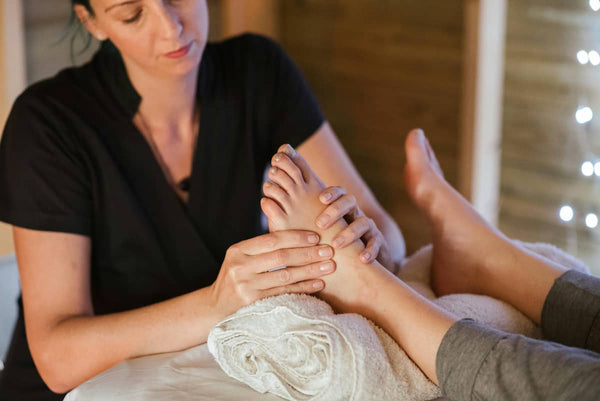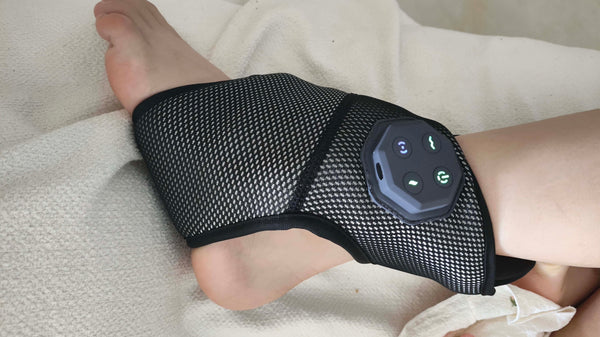 Navigating the world of psoriatic arthritis can feel like a constant search for relief. When joints are stiff, swollen, and painful, the idea of using a massager can be both appealing and intimidating. Will it help, or will it make things worse? This is a question I encounter frequently. From a traditional standpoint, pain and stiffness are often signs of blockage—a stagnation of vital energy, or Qi, and blood in the body’s pathways, known as meridians. The key is not to attack this blockage with force, but to gently encourage flow and restore balance.
Navigating the world of psoriatic arthritis can feel like a constant search for relief. When joints are stiff, swollen, and painful, the idea of using a massager can be both appealing and intimidating. Will it help, or will it make things worse? This is a question I encounter frequently. From a traditional standpoint, pain and stiffness are often signs of blockage—a stagnation of vital energy, or Qi, and blood in the body’s pathways, known as meridians. The key is not to attack this blockage with force, but to gently encourage flow and restore balance.
The modern market offers a vast array of massagers, but they are not all created equal, especially for sensitive conditions. Just as in sports rehabilitation, where the goal is to reduce inflammation and gently restore function without causing re-injury, managing psoriatic arthritis requires a similar, thoughtful approach. We must choose tools that soothe and support, not shock and aggravate. Let’s explore which type of personal massager aligns with this principle of gentle restoration.
Psoriatic Arthritis Pain: A Holistic View of Obstruction
In traditional Chinese medicine, conditions like psoriatic arthritis are often categorized as "Bi Syndrome," or Painful Obstruction Syndrome. This perspective suggests that pain arises when the flow of Qi and Blood is blocked, often by external factors like Cold and Dampness that have penetrated the body’s defenses and settled in the joints. Cold is associated with contraction and stiffness, while Dampness leads to swelling, heaviness, and a dull, lingering ache. The pain itself is the cry of the meridians for smooth, unobstructed flow.
Therefore, any effective therapy must address these root causes. The goal is to warm the channels, disperse the cold, resolve the dampness, and invigorate the flow of Qi and Blood. This is fundamentally different from a purely mechanical view of a joint. We are not just treating a physical structure; we are treating an energetic imbalance within a dynamic, interconnected system. This understanding is critical when selecting a therapeutic tool like a massager.
The Core Principle: Restoring Flow, Not Forcing Movement
The fundamental principle for managing Bi Syndrome is one of gentle persuasion, not aggressive force. When a river is blocked by a dam of logs, you don't dynamite the dam; you carefully remove the logs one by one to restore the natural current. Similarly, for an inflamed joint, the aim is to gently coax the circulation and energy to move freely again. An overly aggressive approach can backfire, causing what we call a "rebellious" flow of Qi, which can actually increase inflammation and pain.
This is why the type of massager you choose is so important. A tool that provides gentle, consistent, and warming stimulation can effectively encourage the meridians to open up. It supports the body's own healing intelligence. In contrast, a device that uses harsh, jarring impacts can further traumatize the area, tightening the blockage and making the pain even worse. The body responds to invitations, not demands.
What Techniques Can a Modern Massager Simulate?
The beauty of modern technology is its ability to replicate the wisdom of ancient healing techniques, making them accessible for daily home use. The right massager can simulate methods that have been used for centuries to relieve pain and restore balance. It’s simply a matter of knowing what to look for.
- Moxibustion (Warming Therapy): One of the most powerful tools for Bi Syndrome is heat. Multifunctional massagers that incorporate heating functions or red light therapy mimic the effects of moxibustion. The gentle warmth penetrates deep into the tissues, helping to disperse Cold, relax tendons, and promote the smooth flow of Qi and Blood. This is especially effective for the kind of stiffness that feels worse in cold or damp weather.
- Tui Na (Gentle Massage): Techniques that use rhythmic air compression or low-frequency vibration are modern versions of Tui Na methods. Air compression provides a gentle, squeezing action (An Fa) that improves circulation without pressing directly on a sensitive joint. Gentle vibration (Zhen Fa) can help to unblock minor stagnation and soothe tense muscles around the joint.
- Acupressure (Point Stimulation): For those who prefer a more hands-on approach, simple manual tools like finger pressure pads or knobby balls allow you to apply targeted pressure to acupoints. This mimics Dian Xue (acupressure) and allows for precise, controlled relief. You have complete control over the pressure, which is vital for sensitive areas.
Why Percussive Tools (Massage Guns) Should Be Avoided
This brings us to a crucial point of contention: the massage gun. While this powerful percussive massager has its place in treating deep muscle knots for athletes, it is generally ill-advised for psoriatic arthritis. From a holistic perspective, its rapid, forceful strikes are a form of aggressive stimulation. Using such a tool on or near an inflamed joint is like trying to untangle a delicate silk thread with a hammer—it only creates a bigger, more chaotic mess.
These intense impacts can easily aggravate the underlying inflammation, scatter the body's protective Qi, and potentially damage the delicate network of meridians around the joint. You may be trying to find a good "massage near me" in a device, but this isn't it. The body is already in a state of defense; it needs to be soothed and calmed, not put on higher alert. This is simply the wrong tool for this specific job.
How to Use a Therapeutic Massager for Psoriatic Arthritis
 Once you've chosen an appropriate tool, knowing how to give a massager to yourself properly is key to unlocking its benefits. The approach should always be one of mindfulness and respect for your body's signals. My advice is always to treat the area as a whole, not just the single point of pain.
Once you've chosen an appropriate tool, knowing how to give a massager to yourself properly is key to unlocking its benefits. The approach should always be one of mindfulness and respect for your body's signals. My advice is always to treat the area as a whole, not just the single point of pain.
Start by using the massager on the muscles surrounding the affected joint, working along the general path of the limbs toward the hands or feet. This helps to open the entire meridian pathway and encourage circulation to flow *through* the area of stagnation. If you're using a device with heat, allow the area to warm up for a few minutes before introducing any vibration or compression. Pay attention to the sensations. A feeling of pleasant warmth, a gentle tingling, or a sense of release are all positive signs. If you feel any sharp or increasing pain, stop immediately.
Choosing Wisdom Over Force
So, what is the best massager for psoriatic arthritis? It is not the strongest or most powerful one. It is the wisest one—a tool that aligns with the body's need for gentle warmth, improved circulation, and balanced energy flow. Multifunctional massagers with heat, air compression, and gentle vibration are often an excellent choice. Simple manual tools provide an invaluable level of control for targeted relief.
By avoiding aggressive, percussive devices and instead choosing a massager that soothes and supports, you are working with your body, not against it. This simple shift in approach can make a world of difference, turning a modern gadget into a powerful ally on your journey toward greater comfort and well-being.
Frequently Asked Questions
What are the most recommended massagers for general use?
For general, all-purpose use, handheld wand massagers with interchangeable heads are incredibly versatile, allowing you to address everything from a stiff neck to sore legs. For targeted relaxation, a Shiatsu massage pillow with a heating function is a fantastic choice for the lower back and shoulders. If you spend a lot of time on your feet, a dedicated foot massager that combines rollers and air compression can provide immense relief. The key is to look for models with adjustable settings to suit different needs and body parts.
How to compare massagers by brand and price?
When comparing massagers, start by reading a variety of independent massager review articles and customer testimonials to get a sense of a brand's reputation for durability and customer service. Price often reflects motor power, battery life, quality of materials, and warranty length. A less expensive model may suffice for occasional use, but for regular therapy, investing in a mid-range or high-end device from a reputable brand often provides better performance, more features like heat or varied patterns, and greater longevity. Don't let price be the only factor; consider it an investment in your well-being.
Are massagers safe for daily use?
For most healthy people, using a personal massager for 15-20 minute sessions on a particular muscle group each day is generally considered safe. It is vital to listen to your body; if you experience bruising, lingering soreness, or an increase in pain, you should reduce the frequency or intensity. However, for individuals with specific health conditions—such as deep vein thrombosis, severe osteoporosis, certain cardiovascular issues, or inflammatory arthritis—it is absolutely essential to consult a doctor or physiotherapist before starting regular use. They can provide personalized advice to ensure your safety.
This reply is generated based on currently verifiable public information. It is recommended to cross-check key content with authoritative sources.




0 comments